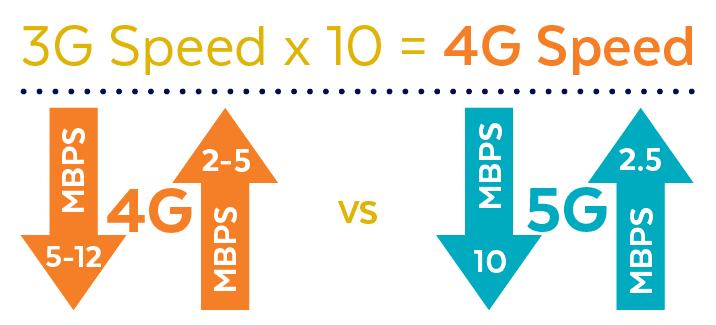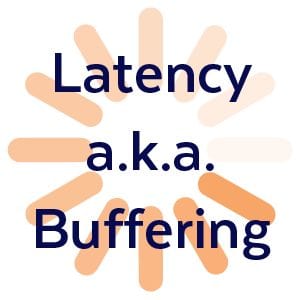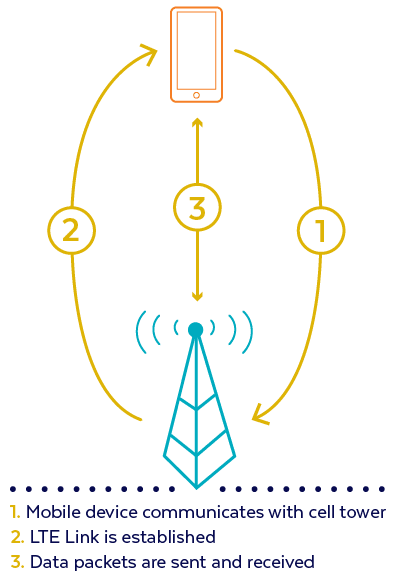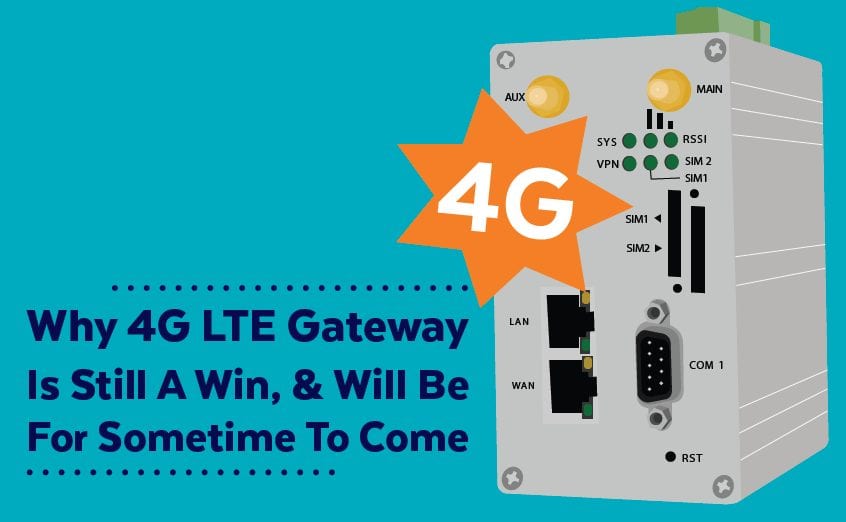We hear a lot about 5G these days. Currently 5G is or is about to go live in major cities around the U.S: such as, Houston, Atlanta, Los Angeles, Las Vegas, Phoenix, and Washington D.C. Still others will go live in early 2019. It all depends upon your provider and location. In some ways, 5G is still a ways from becoming a fully-realized technology but it’s definitely on its way.
Yet IT networking device manufacturers don’t appear to be slowing down on 4G development.
To get to the heart of their reasoning, we need to ask a few questions. Namely, what is 4G and is it still a viable alternative to the coming 5G upgrades?
4G is simply the 4th generation of wireless broadband. It is 10x faster than 3G wireless, and a cost effective way of delivering wireless broadband. 4G LTE wireless broadband offers speeds between 5Mbps and 12Mbps downlink, and between 2Mbps and 5Mbps up. In either case, speed depends upon the distance the signal is sent. Shorter distances are faster.
5G currently offers 10Gbps downloads and 2.5Gbps uploads, so clearly, 4G is still competitive.
 What do organizations looking to upgrade their wireless networking infrastructure do while they wait for 5G? The answer to this question may be found in the much used acronym: LTE. These letters stand for Long Term Evolution (LTE).
What do organizations looking to upgrade their wireless networking infrastructure do while they wait for 5G? The answer to this question may be found in the much used acronym: LTE. These letters stand for Long Term Evolution (LTE).
LTE infrastructure is not a short-term solution. LTE is designed, specifically, to get end users through the rest of 4G and well into the 5G stage of wireless.
NOTE: a gateway is the device that supports your wireless area network.
LTE Gateway offers end users a cross-generational solution in this vibrant stage of 4G wireless, while the developers work out the 5G bugs.
What exactly does 4G offer?
The need for speed
LTE uses Orthoganal Frequency Division Multiple Access (OFDMA) for the downlink and Single Carrier-Frequency Division Multple Access (SC-FDMA) for the up. OFDMA fully captures the frequency ranges it employs by taking advantage of both carrier and subcarrier waves in the downlink direction. It’s super efficient. Here’s an excerpt from one of our earlier articles describing this process:
In OFDMA, timed bands are actually divided between multiple users.The ORTHOGONAL aspect controls the timing of bands so that no signals or data interfere with other signals sharing the same frequency.
With SC-FDMA, data transmissions are shorter and therefore save on battery life. Together, these schemes work together for optimal outcomes and end-user experiences.
Additionally, LTE uses multiple antennae at the tower to support high data rates at speeds of 1 millisecond.
What’s the latency for LTE wireless technology?
Another benefit to LTE technology is low latency or lag time between when data onboards carrier and when it’s received.
First, let’s define latency. Latency is signal time. It’s the time between when the train leaves the station and when it arrives at the final destination. It’s also known as buffering. Grrr. Most people don’t think about latency until they see that little wheel turning on their video screen waiting for their video to resume.
Experts say 4G latency speeds can reach as fast as 2 milliseconds for LTE.
These speeds seem almost ridiculous. Can the human eye even perceive the difference between 100 and 2 milliseconds? Yet there are sound reasons why these speeds are relevant.
They are important when streaming high resolution video like 4K and 8K. When we get to 3D it’ll become even more important for images to appear realistic.
The other thing is accommodation of traffic on busy networks. When you start to increase network user density, physical resource blocks can fill up quickly.
The timing aspect of shared bands, though, solves this problem.
4G LTE sounds good in theory but what about actual delivery?
Phone Arena compares 4G LTE speeds for broadband providers across various US markets—upstream and downstream:
- AT&T
- Verizon Wireless
- Sprint
- T-Mobile.
Each one of these providers is giving their customers excellent mobile streaming speeds.
“4G LTE has brought blazingly fast Internet to our mobile devices,” states PhoneArena, “with speeds often higher than what home Internet connections offer. However, not all carriers are equal in their offerings.”
Sadly, this disparity is due, in part, to Internet throttling, something cable providers may not be able to remedy. Infrastructure rollouts including fiber installations and technologies like G.Fast will improve things relatively quickly.
That said, 4G is performing well.
Current data rates vary city-by-city and depend upon which carriers are active, but the results are stunning for the 4G user and competitive with what 5G is going to be offering over the next few years at least as 5G rolls out. It promises to eventually reach speeds 10x faster than 4G, but for now is pretty much the same.
LTE and data
LTE moves multiple data streams at once. The ability to add more users and data streams onto a wireless network simultaneously, is akin to safely removing traffic lights from the roads in your city.
You’re able to go fast because it’s easier to get and stay on a network.
LTE Gateway devices also provide good Internet where broadband is either antiquated or non-existing. 4G is a fantastic alternative to cable, which explains why hotspots have become so popular.
How this data efficiency works
By packing as much digital data as they can onto each radio signal, radio frequency engineers maximize the speed and efficiency of an entire network.
4G networks use standard communications IP-based protocols (Internet protocol) to send and receive data in packets. This includes voice data aka voLTE (Voice Over LTE). AI and mobile texting are growing in popularity.

This is called the all-IP standard. Standardized IP packets allow data to traverse all sorts of networks without being scrambled or corrupted.
The signal process soup to nuts
A mobile device begins the sequence by first communicating with the cell tower or base station. The tower is fitted with antennae. Once the LTE link is established, data packets are sent and received at the same time due to the different frequencies used for data in either direction.
Signals travel via radio sub-channels, and are pieced together by processors at the other end.
LTE networks are called long-term evolution because carriers have invested in LTE infrastructure design for the long haul. This “long-term” option offers outstanding scalability. It’s a long-term solution with optimized capacity and performance capabilities that will stay current for some time.
Versatek LTE Gateway products
Versa Technology offers a series of 2-port and 4-port industrial 4G LTE Routers that provide excellent, long-term WAN solutions for places like shopping malls, college campuses, hotels, food courts, government buildings and the like.
Operating temperatures for these sturdy, high-end solutions begin at -20°C to cap at 70°C [-4°F to 158°F], making them perfect for outdoor deployment in warmer climates and equally useful in extreme settings like manufacturing environments.
We invite you to request a custom quote if you’d like help piecing together equipment for a wireless network installation.

